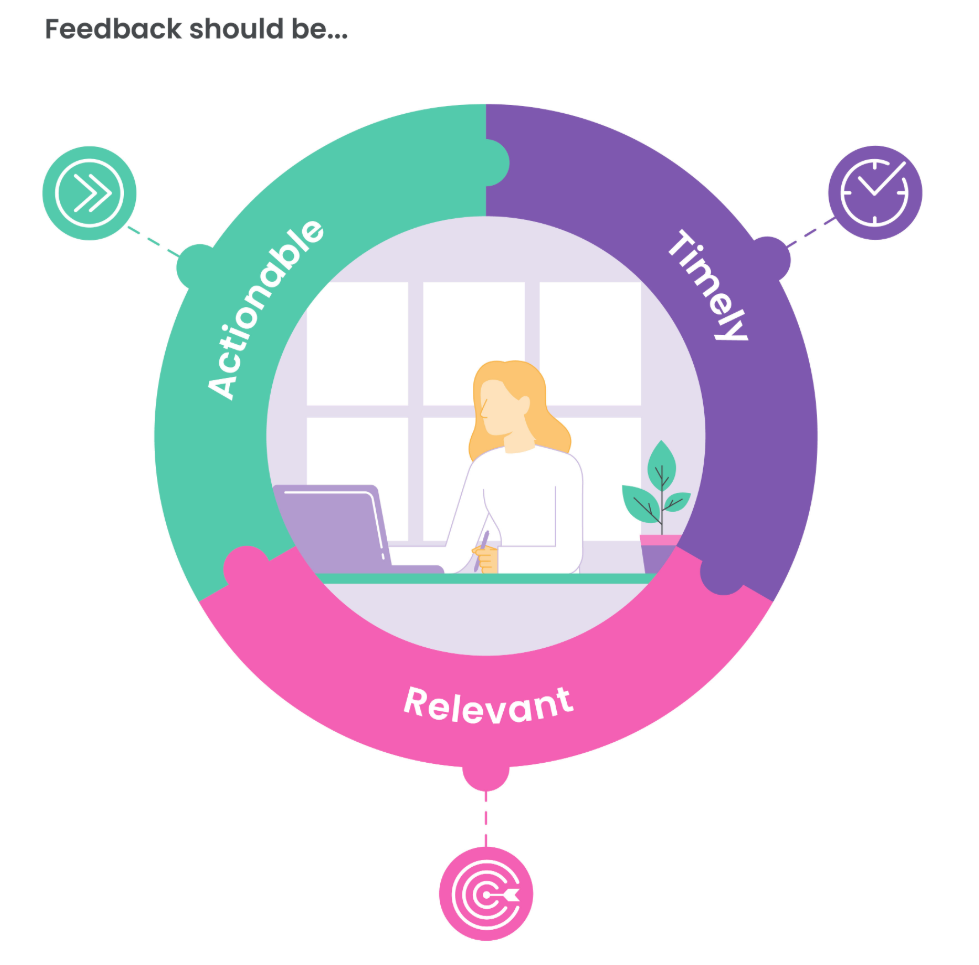(Header image: Feedback Sketchnote, by Luigi Mengato, via Flickr. Licence: CC-BY-20. These sketchnotes are a very interesting find that I definitely want to check out later!)
What makes for effective feedback?
Actionable
Actionable means that the feedback gives the student some practical advice they can act on to improve their future work.
Timely
Timely means that the feedback is provided as soon as possible after the activity. In some cases, this could be synchronous, for example when a teacher takes and observer role and provides feedback during the course of an activity. Automated marking processes can also provide instant feedback. In other cases, assignments should be marked and feedback provided as soon as possible after they are submitted.
Relevant
Feedback should be relevant to the particular learning activity, the academic discipline being studied, and the professional practice that the students are preparing for.
It is very important that we design our methods of assessment and feedback to reinforce our online teaching.
To do this, we need to:
- Use clear navigation
- Give clear instructions
- Use images that match the activity being assessed
- Constructively align what we do with how we give feedback and assess
- Give feedback that is actionable
- Give feedback in time for students to learn from it
- Ensure that feedback is relevant
Feedback: Links
(Main Image: sketchnote feedback, by Luigi Mengato, via Flickr. Licence: CC-BY-20 “The SketchNoteBook” – how to create SketchNote Preview : free download chapter 1 Buy PDF Version Buy paper version )




Leave a Reply